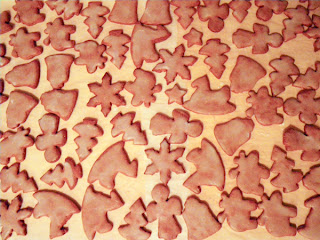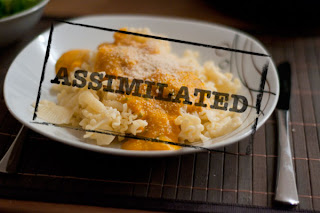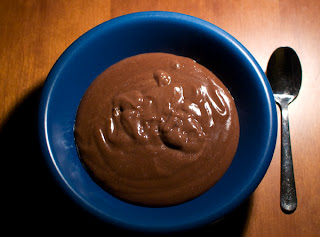This is an incredibly good recipe from the most wonderful norwegians that we met in Paris. Each time we make it, we think of them and are happy. Serves 3-4.
Zubereitungszeit: 1 Stunde
Preparation time: 1 hour
Suggested Music: Watch the documentary "True norwegian black metal" by VBS.tv
Zutaten:
Man muss sich hier nicht exakt an die Mengenangaben halten, und es ist nicht tragisch, wenn das ein oder andere Gewürz fehlt.
- 1 EL Olivenöl
- 3 Zwiebeln, fein gewürfelt
- 2 Dosen gestückelte Tomaten
- 150 mL Rotwein
- Saft einer halben Zitrone
- 1 EL frischer Dill, gehackt
- 1 EL frische Petersilie, gehackt
- 1 Dose rote Kidneybohnen
- 1 Dose kleine weiße Bohnen (oder sonstige Bohnen)
- 150 g Cashews, gesalzen oder nicht ist egal
- 100 g Sojagranulat
- 1/2 EL gemahlener schwarzer Pfeffer
- 175 g Tomatenmark
- 2 Knoblauchzehen, fein gehackt
- 2 TL gemahlener Kreuzkümmel
- 1 TL Chili (das ist abhängig vom verwendeten Chili!!)
- 1 EL Senf
- Salz nach Geschmack
- 1/2 EL getrockneter Basilikum
- 1/2 EL getrockneter Oregano
- 1 kleines Glas/Dose schwarze Oliven (am besten ohne Stein)
- 20 g dunkle oder Zartbitter-Schokolade
- 1 TL Zimt
Ingredients:
Feel free to mix the ingredients freehand, and don't worry if you're missing any of the herbs or only have dried ones, etc. It will work out fine.
- 1 tablespoon olive oil
- 3 onions, finely chopped
- 2 cans chopped tomatoes
- 150 mL red wine
- juice of 1/2 lemon
- 1 tablespoon chopped fresh dill
- 1 tablespoon chopped fresh parsley
- 1 can red kidney beans
- 1 can small white beans (or mix any other beans in that you like)
- 150 g cashews, salted or not
- 100 g granulated soy (Sojagranulat)
- 1/2 tablespoon ground black pepper
- 175 g tomato purée
- 2 cloves finely chopped garlic
- 2 teaspoons ground cumin
- 1 teaspoon chili flakes (depending on your chili!)
- 1 tablespoon Dijon mustard
- sea salt to taste
- 1/2 tablespoon dried basil
- 1/2 tablespoon dried oregano
- 1 small can black olives
- 20 g dark or semi-dark chocolate
- 1 teaspoon cinnamon
Zubereitung:
What to do:
In einem großen Topf (notfalls zwei nehmen) das Olivenöl erhitzen. Die Zwiebeln darin dünsten, bis sie weich und leicht durchsichtig sind.
In a very large saucepan or pot (use two, if in doubt), heat the olive oil. Sauté the onions until tender and transparent.
Tomaten, Rotwein, Zitronensaft, Dill, Petersilie und Bohnen dazugeben. Durchrühren und fünf Minuten köcheln lassen.
Add tomatoes, red wine, lemon juice, dill, parsley, and beans. Stir well and simmer uncovered for 5 minutes.
Cashews und Sojagranulat hinzugeben, außerdem Pfeffer, Tomatenmark, Knoblauch, Kreuzkümmel, Chili, Senf, Salz, Basilikum und Oregano.
Add cashews and granulated soy, followed by pepper, tomato purée, garlic, cumin, chili powder, mustard, salt, basil, and oregano.
Schließlich Oliven, Schokolade und Zimt hinzugeben. 20-30 Minuten köcheln lassen.
Add the olives, chocolate and cinnamon. Let simmer for 20-30 minutes.
Kann so serviert werden, mit etwas Brot. Wenn vorhanden, sind gewürfelte oder mit der Gabel zerdrückte Avocados extrem lecker.
You can serve it as it is, with a little bread. If available, diced or mashed avocados are very delicious.














































